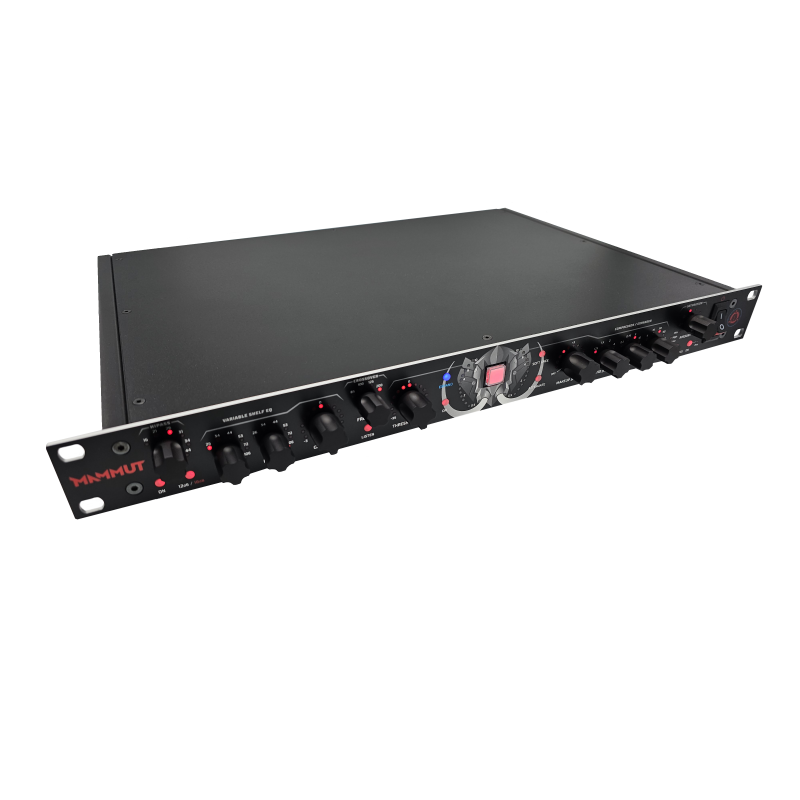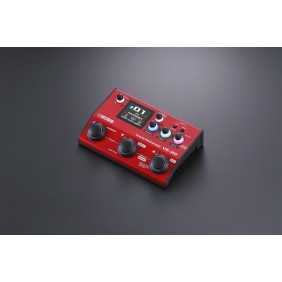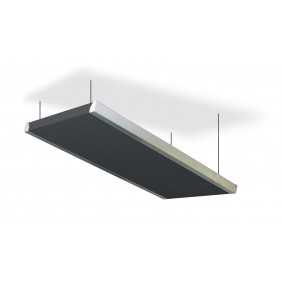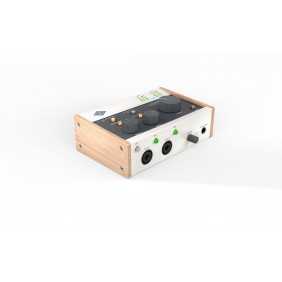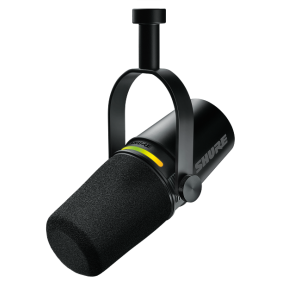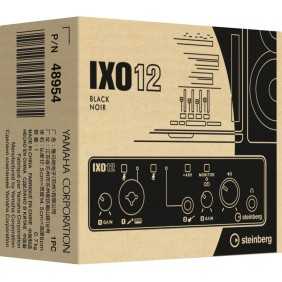Demo Gerät vorhanden, melde dich bei uns um den Mammut bei dir im Studio ausführlich zu testen!
Bass frequencies are becoming more and more important in music, and the Mammut was born out of the need to have a device that focuses these frequencies. This low end shaper is packed with a variety of tools to tame, glue and enhance the content of the spectrum up to 200Hz. Its capabilities are unprecedented and it has never been easier and faster to sculpt your low end.
The compressor / expander core with its proprietary detector circuit was carefully crafted to generate the right amount of harmonics to help tame the desired low frequencies, while making them cut through in an unobtrusive way. With this, the overall low end level can be reduced without loosing punch or heft.
This stereo device is fully analog, there is no conversion to digital in the signal path, yet the unit can be controlled remotely via plugin over an Ethernet connection. Presets can be cycled identically as in a plugin and the hardware adapts instantly. Any setting is stored with the session and reapplied when a session is loaded again. It does not matter how many devices are connected to the network, the Hardware Hub software makes sure that all communication from and to the Mammut is processed reliably and fast. Recalling has never been easier.
The Hardware Hub runs on Windows, macOs and Linux and the plugin is available as VST3, AU and AAX for ProTools.
A lot of attention has been paid to the precision and quality of the device. No effort or expense was spared in the selection of components
and construction.
Features
- Unique 2nd and 3rd order High-pass Filter
- Variable Low-Shelf Equalizer
- Low band frequency selector
- Listen Mode to check low band content and harmonics
- Proprietary compressor / expander circuit as the heart of the device
- Independent attack and release controls that let you sculpt the sound precisely
- Ratio and makeup gain/attenuation
- Soft knee switch
- Saturation stage with selectable amount of odd (transformer) and even (silicon) harmonics
- Switch to move the saturation stage in front of the compressor/expander instead of behind
- Relay based Hard Bypass at inputs/outputs to remove the device completely from the signal path
- Plugin based remote control and recallability
- Custom machined knob hardware
- Stereo device by nature, but can be used in dual mono or M/S mode for interesting interactions of the channels, depending on the settings
High-pass Filter
A special topology was chosen for the high-pass filter. This allows the low frequencies to be brought together and emphasized. Sub-frequency rumble is cut away while the desired content is preserved and made to cut through.
- Bypass switch 12dB to 18dB / Octave switch
- Frequencies 16Hz, 21Hz, 26Hz, 31Hz, 34Hz, 44Hz
Variable Low-Shelf EQ
This equalizer has been created specifically for the Mammut. While the bandwidth of a normal shelf filter remains linear towards the lower frequencies, here it is limited by the lower of the selectable frequency points.
Due to its special design, the EQ has a similar effect as the boost-cut trick of the well-known vintage tube EQ, but in both directions of gain. This is more or less pronounced depending on the gain setting. The implemented topology makes it behave very differently than your standard bell shaped EQ, even though it might look similar.
The upper and lower cutoff frequencies can also be swapped (high frequency point below low frequency point) to create a different set of curves.
- Low Frequencies 26Hz, 34Hz, 44Hz, 53Hz, 72Hz, 106Hz
- High Frequencies 26Hz, 34Hz, 44Hz, 53Hz, 72Hz, 106Hz
- Gain -3dB to +3dB in 0.5dB increments
Crossover and Listen Mode
The crossover filter separates the low from the high frequencies. From here on, the low frequencies below the crossover point are fed into the compressor / expander and saturation stage that follow after this filter and are then later reunited again with the high frequencies. The precision components used in this filter make the crossover frequency response absolutely flat.
The 200Hz setting incorporates more of the available spectrum containing areas where several instruments are already interacting together into the processing. This range is ideal for giving more body to instruments or more cohesion to entire mixes, while the settings below 125Hz focus more on the sub bass specifically.
Listen disables the upper frequency range and only the lower frequencies are sent to the output.
In this mode, the harmonics created in the compressor/expander and saturation circuit can be checked and fine-tuned if desired.
Crossover Frequencies
- 85Hz, 100Hz, 125Hz, 200Hz
Compressor / Expander
The compressor / expander is the heart of the Mammut. Only the lower frequency range selected via the crossover filter is being processed here. It is situated around the hard bypass button, which itself is located in the face of the Mammut.
The circuit can be switched on via the "On" button, but the LEDs in the center show the gain reduction/expansion even when it is not engaged. The LEDs shows the expected GR level from 0.5dB to 10dB.
The proprietary sidechain circuit generates harmonics that enhance and glue the source material in a musical way, which can be controlled by the attack and release settings. These independent attack and release settings determine the frequencies that are being precisely grabbed and altered by the compressor/expander. This makes it possible to tame bassy sounds while not losing the necessary punch and helps them cut through, even when using the expander mode.
By default, a hard knee transition is used, but optionally it can be switched to soft knee that makes the process more subtle and transparent.
The makeup gain affects the entire selected frequency range and behaves like a true low shelf filter.
In combination with the Variable Shelf EQ, countless curves can be created. The makeup gain can be switched between boost and attenuation (e.g. for expansion mode) by pressing the "Attenuate" button.
The active expansion mode can be recognized by the blue LED color of the "Expand" button as well as the blue gain reduction LEDs.
- Ratio1.25:1, 1.5:1, 2:1, 4:1 (Compression) and 1:1.25, 1:1.5, 1:2, 1:4 (Expansion) respectively
- Attack0.2ms, 0.75ms, 3ms, 10ms, 20ms, 30ms
- Release5ms, 15ms, 30ms, 50ms, 100ms, 300ms
- Makeup Gain-6dB to +6dB in 0.5dB steps
Saturation
Beautiful transformer sound can be activated by this independent module. This lets the Mammut switch from a transparent signal path to a colored one.
As soon as the saturation is turned on with the bypass button set to "On", the transformers are brought into a slight saturation that corresponds to a nominal signal level, known from other hardware devices. By switching up from "Min" to "Max", this saturation is continuously increased. This allows quieter sources to be processed, or louder ones to be brought up to overdrive. The setting changes however do not alter the overall level.
As usual for transformers, this saturation mainly produces odd order harmonics that bring out the source material and act like a kind of presence control. This can be pushed beyond the maximum saturation level, which also clips the signal slightly and compresses it in a different way than the compressor.
Optionally, even order harmonics can be activated via the "2nd Harmonics" button. The strength is indicated by the "High" and "Low" LEDs and can be switched by a long (>0.5s) press on the "2nd Harmonics" button. In "High" mode, combined with the odd harmonics from the transformer, the signal comes into the region of a light distortion reminiscent of warm tubes.
The normal signal path leads through the compressor first and then into the saturation stage. With a long (>0.5s) press on the "On" button, the "Pre" LED lights up and the saturation is switched before the compressor. This allows for even more sonic flavors, as the harmonics are then also fed into the compressor for further processing.
Plugin
The plugin mimics the face plate and shows the same control surface for easy orientation. The gain reduction LEDs of the plugin are connected to the device as well and show the corresponding GR level.
The plugin is only a control surface and processes no audio and causes no latency.
Available on Windows and macOs as VST / AU / AAX.
